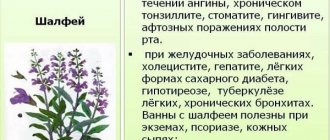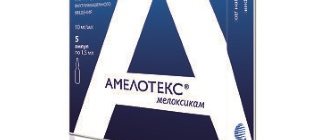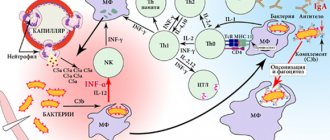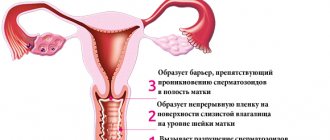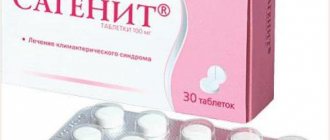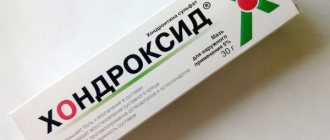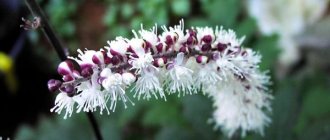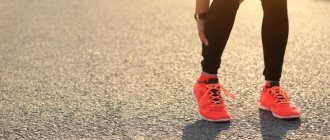Respiratory tract diseases are often associated with coughing, both wet and dry. It is known that a cough does not necessarily need to be treated with antibiotics. Collections of medicinal plants also cope well with this problem and help cure cough in a short time. Next, we will look at 4 types of breast preparations that are available in any pharmacy. Chest collection No. 1, 2, 3, 4 for cough is used by many generations of residents of Russia and the CIS. These are 4 classic recipes that people have been using for decades. The effectiveness of each breastfeed has long been proven by millions of people. But, despite the similarity of these fees, each of them has its own application features. The main condition: they should not be given to children under 12 years of age.
Instructions for use (Method and dosage)
1 tablespoon of Breast Collection 2 is poured into an enamel bowl, then poured into 200 ml of cool water and heated in a water bath for 15 minutes. The resulting solution is infused for 45 minutes at normal temperature, filtered, and the remaining contents are squeezed out. The amount of the resulting infusion is increased to 200 ml with clean water and consumed hot, 100 ml up to 4 times a day for 15-20 days. The prepared infusion is shaken before use.
One filter package of the product is placed in an enamel or glass container and poured 200 ml of boiling water, then covered and left for a quarter of an hour. Drink half a glass up to three times a day for 15-20 days.
Collection option No. 1
The first complex of medicinal plants to eliminate severe coughing attacks in children and adults. It consists of three basic herbs that are actively used in folk medicine:
- Coltsfoot. Promotes rapid expectoration of mucus. Infusions from it are used mainly to eliminate dry cough;
- Marshmallow root. It helps clear the upper respiratory tract of accumulated mucus and thus speed up the healing process. Marshmallow syrup is often prescribed for wet coughs to eliminate phlegm;
- Oregano. This herb has a calming effect. During a long-term illness, the mucous surfaces of the human oral cavity are inevitably subject to irritation, which in folk medicine is eliminated by oregano tea.
Note! Since oregano herbs, which are in the complex, can cause negative reactions in the body (for example, scabies, uterine bleeding, rash), cough collection No. 1 is prohibited from being used by pregnant girls.
What number of chest collection should I use for a dry cough?
Breast collection No. 1 for dry cough contains coltsfoot and marshmallow root: in folk medicine they are used to form and remove sputum.
It must be taken in the following cases:
- When coughing during ARVI;
- When treating influenza;
- For infectious respiratory diseases.
This herbal complex gives good results when taken in parallel with other medications prescribed by the doctor.
How to use?
To improve the patient’s health and achieve the fastest possible recovery, it is necessary to comply with the dosage of the drug. The method for preparing it is as follows:
- 1 tbsp. Place the chopped herbs in a deep metal bowl. The mixture should be poured with 1 glass of cool water;
- Boil the herbs in a water bath for 15-20 minutes, then let the liquid cool;
- Strain the resulting herbal infusion using gauze.
It is recommended to take the drug after meals at least twice a day, half a glass at a time. The duration of therapy depends on the degree of the disease. In the case of colds, 1 week is enough; for bronchitis or tracheitis, the duration of therapy can be up to 3 weeks. Taking the infusion should not be completed until the coughing attacks have completely disappeared.
special instructions
How to choose a chest pack?
Chest expectorant cough collection is available in numbers 1, 2, 3 and 4.
- Medicine number 1 has mainly anti-inflammatory and expectorant effects and is usually used for laryngitis and tracheitis.
- Chest expectorant collection No. 2 has a pronounced anti-inflammatory effect and is prescribed mainly for pneumonia or bronchitis.
- Medicine number 3 contains pine buds, anise fruits, marshmallow and licorice roots, and sage leaves . The product is more often used for pneumonia or bronchitis , as it has an emollient, expectorant and anti-inflammatory effect.
- Medicine number 4 is best used for respiratory diseases accompanied by a non-productive cough. The main effects of this drug are anti-inflammatory, expectorant, sedative and anti-inflammatory.
Collection option No. 4
Chest collection No. 4 is intended for coughs of various forms: wet and dry. It is made from plants that are natural anti-inflammatory and expectorant agents. Below is the composition of this breast collection:
- Chamomile. Its dried leaves relieve irritation and have a calming effect on the irritated oral cavity;
- Swamp wild rosemary. Prevents the spread of pathogenic bacteria in the throat and mouth;
- Violet petals. Helps eliminate frequently recurring coughing attacks and has a sedative effect;
- Peppermint. Stabilizes the patient’s respiratory system;
- Calendula. Promotes the formation of sputum and improves expectoration during wet coughs.
The main difference between this drug is its expanded composition: for its production, the maximum number of plants is used, which help to heal as quickly as possible. Contraindications to breast collection No. 4 – allergy to the herbs that are contained therein. The use of breast milk No. 4 during pregnancy is permitted under medical supervision.
When to use
Chest fees No. 4 are prescribed for the treatment of bronchitis, laryngitis, severe coughing attacks and diseases of the bronchi (for example, bronchitis). Often breastfeeding number 4 is prescribed to improve the health of a patient with flu and colds. In addition, it is prescribed to relieve runny nose and cough during pregnancy.
How to use
The algorithm for preparing this herbal preparation is practically the same:
- 2 tbsp. herbal mixture should be poured 1 tbsp. boiling water and cover with a lid;
- The liquid must be simmered over low heat for 15 minutes, then removed from the heat;
- The broth should be left for one hour, and when finished, strain through a gauze bandage.
The tincture is taken until complete relief from the disease, twice a day after meals, in half a glass portions. It is better to warm it up before use.
Analogs
Level 4 ATC code matches: Cashnol
Anise oil
Bronchophyte
Pine buds
Pertussin
Bronchosan
Gedelix
Mixture for inhalation
Herbion ivy syrup
Herbion plantain syrup
Herbion primrose syrup
Mukaltin
Sinupret Forte
Dr. Theiss syrup with plantain
Bronchosept
Joset
Thermopsol
Tussamag
Marshmallow syrup
Dry cough syrup
Phytobronchol and the same-name products numbered 1, 3 and 4, Broncho-Theiss, Bronchostop, Tusavit, Eukabal.
Can breastfeeding be given to babies?
Children are allowed to use chest preparations for severe coughs, however, there are age restrictions for each herbal composition:
- Severe cough mixtures No. 2 and 4 for children over 3 years old are often prescribed by specialists to get rid of severe coughing attacks and cold symptoms;
- Breastfeeding sessions No. 1 and 3 are allowed for children aged 12 years and older. Prescribed for the elimination of ARVI, treatment of respiratory inflammation, asthma.
Doctors do not recommend giving breastfeeding mixtures to children under 3 years of age and infants, since there is no information on the successful treatment of respiratory tract ailments with such decoctions.
You should start treatment only after consulting a therapist: this advice is especially relevant for pregnant women. Taking the tincture should be combined with breathing exercises and taking suitable medications with an expectorant effect, prescribed by a doctor.
Varieties
Chest cough collection is prescribed to enhance the effectiveness of basic treatment or combat mild respiratory tract pathology. Plant-based drugs are safe, but they are less effective than synthetic drugs.
There are four types of breast collection, depending on the set of plants in the composition (see photo).
Despite this, all herbal medicine options can be taken to treat the following respiratory diseases:
- acute and chronic forms of bronchitis;
- inflammation of the upper respiratory tract;
- bronchial asthma and other pathologies accompanied by narrowing of the lumen of the bronchi;
- chronic obstructive pulmonary disease (COPD);
- tuberculosis. In this case, you should use chest cough syrup only after consulting a doctor and in combination with specific antimicrobial agents;
- pneumonia - pneumonia;
- acute respiratory diseases (ARI), influenza, pathologies of the respiratory system, which are accompanied by the formation of sputum and cough of various origins.
The corresponding product is also recommended for smokers. Herbal infusions help reduce coughing. Despite the general indications and method of use, chest preparations for cough therapy differ in composition, which leads to certain nuances when prescribing medications.
Breast collection No. 1
Chest collection number 1 is the first version of a herbal remedy for cough, which is created from a combination of three basic plants:
- Marshmallow root. The natural ingredient reduces the severity of inflammation in the pathological area. The secretion of bronchial mucus increases with improved elimination of sputum from the respiratory tract;
- Coltsfoot leaves. The plant has an expectorant effect, accelerating the process of clearing the respiratory system of accumulated mucus;
- Oregano herb. In addition to the expectorant effect, the plant calms the patient and reduces emotional stress.
The proportion of active ingredients is 40:40:20%, respectively. The medicine is prescribed during seasonal respiratory diseases. In the presence of high temperature, the herbal mixture must be combined with antimicrobial and other specialized medications.
The product is produced mainly in the form of a ready-made dried herbal mixture, which is used as a tea leaves for infusions. Sometimes the medicine is sold in ready-made packaged sachets.
Chest cough pack No. 2
Breast collection No. 2 contains the following active ingredients:
- Coltsfoot. The effects are described above;
- Licorice. The plant reduces the severity of the inflammatory process, stabilizes microcirculation, accelerates the liberation of the body from pathogenic microbes;
- The plantain is big. Expectoration is stimulated and bronchial drainage is normalized.
Interesting! In 1955, German scientists conducted a series of experiments using licorice root extract. In addition to the positive effect on patients with diseases of the respiratory system, doctors have proven that the plant reduces the severity of symptoms in rheumatological patients.
This phenomenon was later studied in more detail. Licorice strengthens blood vessels, stabilizing microcirculation. The bioactive substances contained in the plant inhibit inflammation and help reduce the intensity of pain in patients with joint damage.
Chest collection No. 3
Breast collection No. 3 is a mixture of the following plants:
- Althea. The effects are described above;
- Pine buds. Phytoncides included in coniferous plants reduce the activity of pathogenic microorganisms, providing a local disinfectant effect;
- Anise. Stimulates expectoration of sputum and inhibits the development of pathogenic bacteria;
- Sage. The plant reduces the severity of inflammation, reduces swelling of the mucous membrane with normalization of bronchial breathing.
Due to its antimicrobial effect, the drug is popular for seasonal respiratory diseases. The activity of pathogenic bacteria is minimized and patient recovery is accelerated.
Chest cough collection instructions for use - COLLECTION No. 1 | COLLECTION No. 2 | COLLECTION No. 3 | COLLECTION No. 4
Sage in the composition of the medicine additionally affects the hormonal levels of the female body. The plant is used in complex therapy for internal imbalances that occur after menopause. The severity of the effect is insignificant.
Chest collection No. 4
Chest cough collection 4 was created later than the previous products.
The composition of the drug includes the largest number of bioactive components:
- Chamomile flowers (20%). The plant reduces the severity of inflammation, destroys pathogenic microorganisms, improves microcirculation in the respiratory tract and throughout the patient’s body;
- Shoots of wild rosemary (20%). The natural component enhances expectoration of sputum, fights inflammation, stimulates the central nervous system and myometrium - the muscular layer of the uterus;
- Marigold flowers (calendula) (20%). Effects - dilation of the bronchi, inhibition of pathogenic microorganisms, reduction in the severity of inflammation, improvement in sputum discharge;
- Violet herb (20%). Microcirculation is stabilized and the patient’s emotional background is normalized due to the sedative effect;
- Licorice root (15%);
- Peppermint leaves (5%). Effects – inhibition of pathogenic microorganisms, stabilization of microcirculation.
The rich composition of this medicine allows you to drink it for almost any form of respiratory pathology. The product has a complex effect on the patient’s body, stabilizing the function of the respiratory tract.
How to take breast milk No. 1,2,3,4 for children?
Before treating your baby with breastfeeding, be sure to consult with your pediatrician! After all, herbal infusions are not as safe as they might seem at first glance.
- Breastfeeding Nos. 2 and 4 are considered the most suitable but the first and third are prescribed after 12 years.
- As a rule, with the help of herbal decoctions they fight ARVI, asthma and inflammation of the respiratory tract.
- strictly not recommended to give breastfeeding to children who have not reached the age of three .
Contraindications for use and side effects
Contraindications:
- child age up to 3 years for collection No. 2 and 4, up to 12 – No. 1, 3;
- pregnancy and lactation;
- individual hypersensitivity to the components of the drug.
Important! Chest collection cannot be used for inhalation. The medicine is for internal use only.
Possible adverse reactions:
- weakness;
- nausea, vomiting;
- allergic reactions such as urticaria.
Is it possible to drink breast milk during pregnancy?
Breastfeeding can be taken while pregnant, but only under the strict supervision of a doctor. Not all herbs from which these herbal complexes are made have a beneficial effect on the health of mother and baby:
- Breast collection No. 1 is not recommended for use during pregnancy (3rd trimester), since the oregano it contains sometimes causes uterine bleeding;
- Herbal complex No. 2 contains licorice root extract, which lowers the level of female hormones of the expectant mother and, with constant use, can even lead to miscarriage;
- Breast collection No. 3 for coughing attacks contains anise, a spice that is not allowed for expectant mothers.
You can cure a severe cough in a pregnant woman with herbal complex No. 4, which, although it contains a small percentage of licorice root, is not as dangerous for the body of the expectant mother and fetus as previous herbal combinations. In any case, therapy should be started only after prior consultation with your doctor.
Compatibility with other drugs
Breastfeeding should not be combined with medications that block the cough reflex. The good thing about collecting medicinal herbs is that it makes it easier to cough up. Such preparations “work around the cough,” and if cough blocking drugs are used together with them, they will simply conflict and neutralize each other’s effects. Breast collections will thin the phlegm, but by blocking the cough, the phlegm will not be cleared and congestion may form, increasing inflammation.
Chest collection is better suited for treating wet coughs, but it can also be used for dry coughs. The main thing is not to combine it with classic drugs for dry cough - Libexin, Codelac, Stoptusin, Sinekod Terpinkod and others. If you combine these drugs, there is a risk of sputum stagnation, leading to increased inflammation and damage to the bronchial tree.
If the cough is severe, the doctor may prescribe the simultaneous use of breast milk and the above-described “blocking” drugs. This is possible if the effect of complex treatment outweighs the possible risks and complications. But in this case, the drugs need to be alternated. For example, preparations can be used in the morning and during the day, but medications can only be used at night. In any case, only a doctor can prescribe the method of such treatment.
At the same time, breast milk can and should be combined with expectorant drugs, such as Lazolvan, Bromhexine, Mucaltin and others.
Pharmacological properties
Breast collection No. 2 has an expectorant and anti-inflammatory effect.
The effect of the infusion is due to the biologically active substances included in Breast Collection No. 2 contained in the plant components of the raw materials:
- coltsfoot leaves: contain polysaccharides (mucus and other biologically active substances), the pharmacological properties of which determine the complex effect of the plant on inflammatory processes occurring in the mucous membranes of the nasopharynx and respiratory tract, have an expectorant, pronounced anti-inflammatory and antibacterial effect. The presence of a significant amount of mucus in the raw material protects the mucous membranes of the throat, larynx, and oral cavity from irritation through an enveloping effect on them. In addition, saponins, organic acids and mucus have a softening and thinning effect on the dry discharge of the upper respiratory tract, thus restoring the natural movement of the ciliated epithelium in the trachea and bronchi, which helps accelerate the evacuation of inflammatory products, significantly improving expectoration of sputum. Along with this, carotenoids, tannins and sterols contained in coltsfoot leaves exhibit a pronounced anti-inflammatory effect, as a result of which the hyperemia of the mucous membranes decreases; thanks to their bacteriostatic properties, they actively influence the inflammatory process at different stages of its development. The weak antispasmodic effect is due to the content of flavonoids and essential oil in the leaves;
- Great plantain leaves: contain vitamin C and polysaccharides that potentiate the secretion of bronchial glands, have mucolytic, enveloping, anti-inflammatory effects, activate the movement of the ciliated epithelium of the respiratory tract, thereby increasing the secretion of bronchial mucus, improving the dilution of sputum and facilitating its evacuation when coughing. Under the influence of the active substances of the plant, the healing of infected wounds and ulcers is accelerated, the amount of purulent discharge is reduced, and the growth of granulation and epithelization is stimulated. The phytoncides contained in the leaves cause an antimicrobial effect;
- licorice root: flavonoids, triterpenes (glycyrrhizic acid and other biologically active substances) determine the anti-inflammatory and expectorant effect of licorice root. The latter is due to the content of glycyrrhizin in the plant, which stimulates the activity of the cilia of the ciliated epithelium in the bronchi and trachea, enhancing the secretory activity of the mucous membrane of the upper respiratory tract. The anti-inflammatory effectiveness of licorice is expressed by a kind of relief of inflammatory reactions and is largely due to glycyrrhizic acid, released during the hydrolysis of glycyrrhizin.
Contraindications
Absolute:
- ulcerative and erosive lesions of the gastrointestinal tract;
- age up to 12 years;
- pregnancy and lactation (use is possible only as prescribed by a doctor in cases where the expected benefit is higher than the existing risk);
- individual intolerance to biologically active substances included in Breast collection No. 2.
Some manufacturers additionally indicate arterial hypertension, liver cirrhosis, chronic hepatitis, cholestasis, chronic renal failure, hypokalemia, arrhythmia and diabetes mellitus as contraindications.
Diseases that are indications for use
As the name suggests, chest packs are used to treat diseases of the upper respiratory tract. They are most often used for the following conditions:
- chronic and acute bronchitis;
- pneumonia;
- bronchial asthma;
- laryngitis, tracheitis and tracheobronchitis, pharyngitis;
- colds, flu;
- tuberculosis;
- chronic obstructive pulmonary disease.
Prefabricated herbal complexes are taken when it is necessary to start or significantly facilitate the process of sputum discharge as soon as possible and relieve symptoms that cause discomfort.
Recommendations for the use of herbal cough remedies
The effectiveness of a particular drug depends on the individual characteristics of the patient and the severity of the disease. The natural origin of the components, on the one hand, protects against the harmful effects of chemistry, but, on the other hand, it significantly reduces the rate of healing. For this reason, it is worth thinking about complex therapy in parallel with a course of medication.
Any herbal preparations undergo heat treatment
Any form of breast collection is treated with boiling water before use. The course varies from 15 to 20 days. When using herbs for cough, we must not forget about strict adherence to dosages, otherwise the treatment may be useless or even harmful.
Breast preparations are not taken simultaneously with centrally acting antitussives, such as Sinekod, Stoptussin, Codelac, Libexin - this will lead to stagnation of sputum. If the illness is prolonged, you can drink herbs during the day and take syrup at night. Consultation with a specialist is mandatory, regardless of the severity and duration of the disease.
Release form and composition
Dosage forms:
- medicinal collection (plant collection - crushed raw materials, crushed collection): a mixture of heterogeneous grayish-green particles with light yellow, brownish-green and yellow inclusions, odorless, the taste of the aqueous extract is sugary-sweet, with a feeling of mucus (in a cardboard pack of 30 , 35, 50, 75 or 100 g);
- powder collection: a mixture of heterogeneous whitish-green particles with brownish-yellow and brownish-green inclusions, passing through a sieve with holes 2 mm in diameter, odorless; the taste of the aqueous extract is sugary-sweet, with a feeling of mucus (in a cardboard pack there are 10 or 20 filter bags of 2 g each).
Each pack contains instructions for using Breast Collection No. 2.
Active substances in the composition of the drug:
- coltsfoot (leaves) – 40%;
- large plantain (leaves) – 30%;
- licorice (roots) – 30%.
